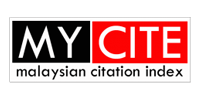Influence of extrusion blow moulding profile temperature on physical, melt flow behaviour, mechanical, morphological and thermal properties of LDPE bottle
DOI:
https://doi.org/10.58915/ijneam.v18i4.2620Keywords:
Low-density polyethylene, Extrusion blow moulding, Profile temperature, Tukey's test, CrystallinityAbstract
Low-density polyethylene (LDPE) is widely used in bottle manufacturing due to its excellent flexibility and processability; however, manufacturers often face difficulties in optimizing and balancing mechanical performance and thermal stability when adjusting processing temperatures of extrusion blow moulding (EBM). This study investigates the effect of EBM profile temperatures on the physical, melt flow behaviour, mechanical, morphological, and thermal properties of LDPE. Profile temperatures ranging from 130 °C to 140°C were systematically evaluated. The moisture content of LDPE decreased by 13.22% as the profile temperature increased, enhancing processability. Density showed a modest rise of 0.33%, while the melt flow index (MFI) improved by 21.49%, indicating enhanced polymer chain mobility. Mechanical testing revealed that tensile strength, tensile modulus, impact strength, and flexural strength declined by 22.7%, 20.85%, 21.59%, and 22.75%, respectively, as temperature increased, due to reduced crystallinity and increased amorphous behaviour with field emission scanning electron microscopy (FESEM) further revealing brittle fracture features. In contrast, tear strength improved by 20.94% and tear force by 26.78%, attributed to better molecular alignment at higher temperatures. Differential scanning calorimetry (DSC) indicated enhancement in ∆Hm and Xc, suggesting more efficient molecular packing and improved chain alignment at higher profile temperatures, with thermogravimetric analysis (TGA) further confirming the improved thermal stability, with the onset degradation temperature at 5% weight loss (T₅ wt.%) increasing by 13.19% and the maximum degradation temperature (Tₘₐₓ) by 3.18%. Statistical analysis using the Tukey test identified 135 °C as the optimum profile temperature, balancing mechanical integrity, tear resistance, and thermal performance. These findings provide valuable guidance for optimizing EBM conditions to achieve superior LDPE product quality with enhanced thermal stability and durability.
Downloads
Published
How to Cite
Issue
Section
License
Copyright (c) 2025 International Journal of Nanoelectronics and Materials (IJNeaM)

This work is licensed under a Creative Commons Attribution-NonCommercial-ShareAlike 4.0 International License.

















